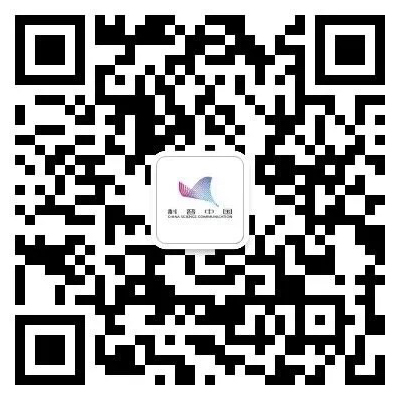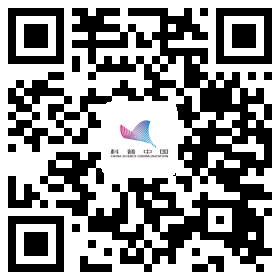這是 達(dá)醫(yī)曉護(hù) 的第 2100 篇文章
上一篇我們介紹了寶寶從四月齡到六月齡各階段發(fā)育的科普。本次的主題是七到九月齡的正常發(fā)育軌跡,如何促進(jìn)寶寶的發(fā)育,以及在什么情況下需要引起重視去看醫(yī)生。 7月齡寶寶會做些什么? 寶出生到現(xiàn)在已經(jīng)半歲啦,不僅對父母來說值得慶祝,對于小寶寶來說這也是一個激動人心的時刻。除了吃喝拉撒睡以外,每天和父母的交流也越來越多,她的想象力現(xiàn)在活躍生動起來了。同時她也更善于記住一些事情,比如她最喜歡的人、玩具和書。 寶寶的情緒一直在發(fā)展,當(dāng)他快樂和悲傷的時候會表現(xiàn)出來讓你知道,同時也可以通過你說話的語氣和臉上的表情來察覺辨別你的感受。你的寶寶可能會表現(xiàn)出對家庭成員或照顧者的強(qiáng)烈依戀,甚至?xí)矚g某些玩具和書籍。同時,你可能會開始注意到她有分離焦慮或怕生的跡象,不用擔(dān)心,這是孩子成長的正常部分。 你可能會聽到很多寶寶的嘮叨。聽到叫她自己的名字可能會回應(yīng),當(dāng)她聽到你說“不”時就會停下來。她也可以用肢體語言或姿勢和你交流,比如,當(dāng)想讓你抱她起來時,她會舉起手臂。 在這個月齡,你應(yīng)該已經(jīng)開始給寶寶喂食固體食物了。當(dāng)寶寶已經(jīng)吃夠,他會通過揮舞小手或者把頭轉(zhuǎn)過去的動作。在這個年齡段,你的寶寶可以自如地翻身了,也可能會開始在屋子里肚子貼著地面,用手匍匐爬行,甚至可以手膝爬行。抱著她的時候,她也許會嘗試站起來上下彈跳。 你的寶寶經(jīng)常會通過把東西放在嘴里,或者仔細(xì)看他手里的東西的方式來探索和學(xué)習(xí)新的事物。他會敲打,搖晃玩具,以及嘗試抓住積木。當(dāng)他夠不到他想要的東西時,他會找你幫忙。 在這個年齡,你的寶寶也許還會做到: 不需幫助而自己坐起來,有時會用到自己的胳膊來保持平衡 用手指撿起較小的物體,把物體向自己拖動。手指向自己拖動物體 在鏡子中看到自己會去用手拍 去尋找并找到部分被隱藏的物體 傾聽音樂 Age 7 months This is an exciting time for your baby. Her imagination comes alive now. She’s also better at remembering things, like her favourite people, toys and books. Your baby’s emotions keep developing. Baby will let you know when he’s happy and sad and can also tell how you’re feeling by your tone of voice and the look on your face.Your baby might show signs of strong attachment to family members or carers, and even prefer some toys and books to others. At the same time, you might see signs of separation anxiety or stranger anxiety.These are a normal part of a child’s development. You might hear a lot of babbling from your baby. She might respond to her own name and stop when she hears you say ‘no’. She might also communicate with you using gestures – for example, she might put her arms up when she wants you to lift her up. You have started feeding your baby solidsaround this age. Your baby will let you know when he’s had enough to eat – often by waving his hand or turning his head away.Your baby can roll both ways and might start to move around the house by commando crawling. She might even crawl using her hands and knees. If you hold her, she might be able to stand and bounce up and down. Your baby is exploring and learning all the time, often by putting things in his mouth or looking closely at what’s in his hand. He’ll bang and shake toys and try to grab blocks. When he can’t reach objects he wants, he’ll look to you for help. At this age your baby might also: · sit up without help, sometimes using her arms for balance · pick up smaller objects and use her fingers to drag things towards herself · pat her own image in the mirror · look for and findpartly hidden objects · listen to music. 8月齡寶寶會做些什么? 在這個年齡,你的寶寶喜歡和你一起玩,會很喜歡玩躲貓貓,搖鈴鐺以及尋找玩具。模仿你的動作,和你一起發(fā)出滑稽的聲音或動物的聲音,對他來說是非常有趣的。同時,和父母在一起玩耍也有助于寶寶感到被愛和安全感。 和之前一樣,寶寶的情緒還在發(fā)展,他會讓你知道他是高興還是難過。他可能會很粘人,對你,其他親密的家庭成員,或照顧他的人,但他還是有點(diǎn)害怕新面孔。這可能表現(xiàn)為分離焦慮和陌生人焦慮,記住這是這個年齡段兒童發(fā)育過程中正常的現(xiàn)象。 語言發(fā)育方面,寶寶在這個月齡表現(xiàn)還是牙牙學(xué)語,嘮嘮叨叨。她的咿呀學(xué)語甚至可能有上下起伏的音調(diào),聽起來像在說話。在這個年齡,大多數(shù)嬰兒仍然使用肢體語言進(jìn)行交流,比如制造噪音來吸引你的注意力。如果你的寶寶說話很早,你可能會聽到她說1-2個字,像“媽媽”或“爸爸”的聲音,但她并不知道這些字是什么意思。 你的寶寶開始學(xué)習(xí)如何更多地探索他的世界。例如,他會仔細(xì)觀察像戒指或鈴鐺這樣的物體,找到隱藏的玩具后打開,把積木放在一起敲敲打打,如果掉下去則會去尋找。另外,他還是會把大部分東西放進(jìn)嘴里。在現(xiàn)在這個階段,寶寶會反復(fù)練習(xí)用手拿起東西,并且使用手指抓住東西并向自己拖動。寶寶會通過爬行,屁股移動,或滾動的方式到處移動。他也可以自己獨(dú)坐了。 在這個年齡,你的寶寶也許還會做到: 嘗試咀嚼,這就意味著她現(xiàn)在已經(jīng)可以吃搗碎或切成小塊的食物 嘗試自己吃,比如,自己用手拿起食物,或自己拿著奶瓶 會應(yīng)要求找人,比如,如果你說,“媽媽在哪里?”她也許會四處張望尋找媽媽 扶站 Age 8 months At this age, your baby loves playing with you and really enjoys playing peekaboo, ringing bells and finding toys. Copying what you do and making funny sounds or animal noises together with you are lots of fun for your baby. Playing together also helps baby feel loved and secure. At this age your baby’s emotions are developing, and he’ll let you know when he’s happy or upset. He might show strong attachment to you and other close family members or carers, but he’s still a bit afraid of new faces. This might show up as separation anxiety and stranger anxiety, which are normal parts of children’s development around this age. Your baby is babbling. Her babbling might even have up and down tones that sound almost like talking. At this age most babies still use body language to communicate, like making noises to get your attention. If your baby is an early talker you might hear her say 1-2 words like ‘mama’ or ‘dada’, but she won’t know what these words mean. Around this time your baby starts working out how to learn more about his world. For example, he’ll look closely at objects like rings or bells, uncover toys after seeing them hidden, bang blocks together and look for them when he drops them. He’ll still put most things into his mouth too.Your baby is getting lots of practice picking up things and uses her fingers to catch and drag objects towards her.Crawling, rolling or shuffling are all ways your baby might be moving around. He can sit on his own. At this age your baby might also: · try to chew, which means she’s now ready for food mashed or minced into small pieces · try to feed herself – for example, by picking up her food or holding a drink bottle by herself · look for family members if you ask her to – for example, if you say, ‘Where’s Mummy?’, she might look around for her mother · stand with help. 9月齡寶寶會做些什么? 咿咿呀呀,拍手,爬行,扶站--這個月齡寶寶會做很多事情。 在這個年齡,寶寶的大腦正在經(jīng)歷快速成長。他的記憶力在提高,你也會發(fā)現(xiàn)他對喜歡的人、玩具和書籍有了更強(qiáng)的依戀。你的寶寶甚至?xí)矚g一個特定的人--這可能是你,你的伴侶,或另一個親密的家庭成員或照顧者。在這個年齡段,陌生人的分離焦慮和焦慮是很常見的, 是兒童發(fā)育過程中的正常部分。 當(dāng)孩子開始表現(xiàn)出她的性格時,你就會對她將來可能的樣子開始有所了解。她的情緒也在逐漸成熟——她可以表達(dá)害怕,也可以讀懂并回應(yīng)你的面部表情。 你的寶寶開始學(xué)會把單詞和它們的含義聯(lián)系起來,并理解你的肢體語言。比如,如果你用手去指某個東西,他可能會朝著它看。雖然他還會喋喋不休地重復(fù)“媽媽”或“爸爸”,但還是不知道這些詞的意思。 在這個年齡,你的寶寶也許還會做到: 模仿聲音 發(fā)出噪音以引起你的注意 探索她周圍的一切——比如,她可能會敲響鈴鐺,敲打積木,找到隱藏的物體 當(dāng)她聽到你說“不”時,停止她正在做的事 通過抓、咬和咀嚼食物來練習(xí)她的進(jìn)食技能 開始嘗試用手指拿食物自己進(jìn)食 Age 9 months Babbling, clapping hands, crawling, pulling up to stand – there’s a lot happening for your baby. At this age, your baby is having a growth spurt in his brain. This improves his memory and you might notice him forming stronger attachments to his favourite people, toys and books.Your baby might even prefer a particular person – this could be you, your partner, or another close family member or carer. Separation anxiety and anxiety around strangers is pretty common at this age. It might help to know that these are normal parts of child development. You’ll start to get an idea of what your child might be like in the future, as she starts showing you her personality. Her emotions are maturing too – she can express fear and also read and respond to your facial expressions. Your baby is starting to link words with their meanings and understand your body language – for example, if you point at something, he might look towards it. He’ll still be babbling, and might say ‘mama’ or ‘dada’ without knowing what these words mean. At this age your baby might also: · copy sounds · make noises to get your attention · explore everything around her – for example, she might ring bells, bang blocks and find hidden objects · stop what she’s doing when she hears you say ‘no’ · practise her eating skills by holding, biting and chewing food · start feeding herself with her fingers. 如何促進(jìn)7到9月齡寶寶的發(fā)育? 1. 陪寶寶交談: 這個年齡寶寶開始對交談很感興趣,因此和她談?wù)撊粘I钪械氖虑椋T如你現(xiàn)在正在做什么等將會有助于她理解單詞的含義。記住,和寶寶說話,越多越好! 2. 傾聽并回應(yīng)寶寶的咿咿呀呀: 這樣會培養(yǎng)寶寶的語言、溝通和讀寫能力,并會讓他感到“被傾聽”、被愛和被重視。用自己溫暖、充滿愛的方式說話或發(fā)出聲音來回應(yīng)是很重要的。你的寶寶會喜歡聽到你上下起伏的聲音,當(dāng)你和他說話時喜歡看著你的臉。 3. 陪寶寶一起閱讀: 閱讀,說一說繪本中的圖片,給寶寶講故事都有助于培養(yǎng)寶寶的想象力。同時,這也為寶寶長大后學(xué)習(xí)單詞和句子奠定了基礎(chǔ)。此外,這樣也對他在長大后理解語言和學(xué)習(xí)閱讀有幫助。 4. 陪寶寶一起玩: 唱歌、玩玩具、玩躲貓貓,一起發(fā)出滑稽有趣的聲音或動物的聲音。在這個年齡,你的寶寶會很喜歡和你一起玩并和模仿你的動作,再者,一起玩也能讓他感到被愛和安全。 5. 陪寶寶一起在戶外活動: 和你在一起去戶外會給寶寶帶來許多不一樣的體驗——外面的世界很精彩,有太多新的東西可以看、聞、聽和觸摸。 6. 鼓勵運(yùn)動: 四處爬動和探索幫助寶寶鍛煉肌肉力量,為以后的坐位站起和行走等更復(fù)雜的運(yùn)動做準(zhǔn)備。如果你的寶寶在爬行,你可以試著趴在地板上和她一起爬行,或者玩追逐游戲。 7. 安全的居家環(huán)境,可以讓孩子可以不受傷害地自己四處爬動。 Helping baby development at 7-9 months 1. Talk to your baby: Your baby is interested in conversation, so talking about everyday things like what you’re doing will help her understand what words mean. And the more talk, the better! 2. Listen and respond to your baby’s babbling: This will build his language, communication and literacy skills, and make him feel ‘heard’, loved and valued. Responding by talking or making sounds in your own warm, loving way is important. Your baby will enjoy hearing your voice go up and down and love watching your face as you talk to him. 3. Read together: Reading, talking about pictures in books and telling stories help develop your baby’s imagination. This also lays the groundwork for learning words and sentences when your baby is older. In addition, these help him to understand language and learn to read as he gets older. 4. Play together: Sing songs, play with toys, play peekaboo, and make funny sounds or animal noises together. At this age, your baby really enjoys playing with you and copying what you do. Playing together also helps him feel loved and secure. 5. Spend time playing outdoors: Being out and about with you gives your baby lots of different experiences – there’s so much to see, smell, hear and touch. 6. Encourage moving: Moving and exploring help your baby build muscle strength for more complex movements like pulling to stand and walking. If your baby is crawling, you can try getting down on the floor and crawling around with her, or playing a game of chasey. 7. Make your home safe so your baby can move about without getting hurt. 在什么情況下需要引起重視去看醫(yī)生 如果觀察7-9月齡的寶寶有以下的情況或者有你擔(dān)心的情況,需要帶上寶寶去看醫(yī)生。 視覺,聽覺和交流 沒有與你眼神接觸或交流,不會追視移動的物體 沒有咿呀學(xué)語 沒有轉(zhuǎn)向聲響或聲音 行為 沒有表現(xiàn)出快樂還是悲傷的情緒 對照顧者幾乎沒有或根本沒有情感表達(dá)——例如,他不會對你微笑 運(yùn)動發(fā)育 沒有翻身 感覺非常松軟或非常僵硬 不能扶坐或扶站 使用一只手的要比另一只多得多 Red flags by age 7 to 9 months: See your child and family health nurse or GP if you have any concerns or notice that your seven to nine-month-old is having any of the following issues. Seeing, hearing and communicating · isn’t making eye contact with you, isn’t following moving objects with her eyes · isn’t babbling · isn’t turning towards sounds or voices. Behaviour · doesn’t show whether he’s happy or sad · shows little or no affection for carers – for example, he doesn’t smile at you. Movement · isn’t rolling · feels very floppy or stiff · can’t sit up or stand up with your help · uses one hand a lot more than the other.



作者:澳大利亞墨爾本大學(xué)醫(yī)學(xué)院兒科博士
百匯醫(yī)療(中國)兒科醫(yī)師
蔣本然
陪伴孩子成長的修行路必備手冊
圖文簡介
上一篇我們介紹了寶寶從四月齡到六月齡各階段發(fā)育的科普。本次的主題是七到九月齡的正常發(fā)育軌跡,如何促進(jìn)寶寶的發(fā)育,以及在什么情況下需要引起重視去看醫(yī)生。
- 來源: 達(dá)醫(yī)曉護(hù)
- 上傳時間:2019-11-19


 科普中國公眾號
科普中國公眾號
 科普中國微博
科普中國微博

 幫助
幫助